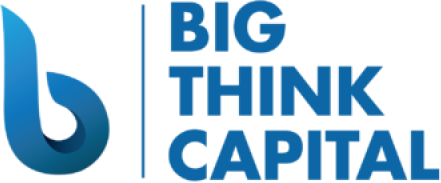Navigating Post-Pandemic Inflation: Strategies for Small Businesses to Thrive Amid Rising Interest Rates and Costs
Estimated reading time: 8 minutes
- Prioritize cash flow management to effectively navigate rising costs.
- Engage actively with lenders to secure favorable funding terms.
- Leverage technology for enhanced financial visibility and management.
- Understand inflation trends to make informed pricing strategies.
- Optimize working capital to maintain liquidity and operations.
Table of Contents
- Understanding the Current Financial Landscape
- The Impact of Rising Interest Rates on Small Businesses
- Inflation Trends and Small Businesses
- Working Capital Management in an Era of Rising Costs
- Maximizing Business Lines of Credit Amid Higher Interest Rates
- Strengthening Bank and Lender Relationships
- How Digital Cash Flow Tools Can Empower Your Business
- Practical Takeaways for Business Owners Exploring Financing
- FAQ Section
Understanding the Current Financial Landscape
The U.S. economy has encountered a storm of rising costs and rates since recovering from the pandemic. In 2025, the Federal Reserve has pursued aggressive monetary policy to counteract inflation, leading to increased interest rates. According to the Federal Reserve Bank of St. Louis, the average federal funds rate has risen to 5.25%, influencing the borrowing costs for various loans, from mortgages to business credit.
The inflationary pressures originally caused by supply chain disruptions, labor shortages, and increased consumer demand are still apparent, leading to higher costs for goods and services. As of early 2025, annual inflation is expected to remain above 4%, with the Consumer Price Index reflecting the climbing costs of essentials like food, energy, and construction materials (Bureau of Labor Statistics).
The Impact of Rising Interest Rates on Small Businesses
Rising interest rates can significantly impact small businesses, affecting their borrowing costs and overall profitability. Here are some specific implications:
- Higher Loan Costs: Businesses reliant on financing will see an increase in their interest payments. This can affect decisions about expanding operations, purchasing new equipment, or managing cash flow.
- Reduced Access to Capital: As lending becomes more expensive, banks may tighten their lending standards, making it more challenging for small businesses to secure funds.
- Strain on Profit Margins: Increased operational costs, combined with elevated borrowing costs, can squeeze profit margins, leaving less room for growth or reinvestment.
To mitigate these risks, business owners must adopt strategic measures to navigate the tumultuous financial landscape.
Inflation Trends and Small Businesses
In 2025, understanding inflation trends becomes crucial for small business owners. Here are key aspects to consider:
- Cost Management: With inflation expected to stay above 4%, keeping a close eye on supply costs and pricing strategies is essential. Successful businesses actively look for ways to cut expenses without compromising quality.
- Passing Costs vs. Absorbing Them: Many business owners wrestle with whether to pass increased costs to customers. While this could safeguard profit margins, it risks reducing customer demand. Finding the right balance requires careful market analysis and understanding customer price sensitivity.
- Long-Term Contracts with Suppliers: Locking in prices via long-term supplier contracts may help mitigate the impact of rising costs. This strategy can provide cost predictability, which is vital for budgeting purposes.
Working Capital Management in an Era of Rising Costs
Effective working capital management becomes paramount when navigating inflation and escalating costs. Here are some strategies to consider:
- Monitor Cash Flow Regularly: Regularly tracking cash flow can help identify periods of financial strain early. Use tools like cash flow forecasting models to predict the timing of cash inflows and outflows.
- Optimize Inventory Management: Optimize your inventory levels to align with demand, reducing the costs associated with holding excess stock. Implement just-in-time inventory practices or adopt inventory management software to streamline your processes.
- Reduce Unnecessary Expenses: Conduct a thorough review of ongoing expenses, identifying areas where costs can be trimmed without affecting operational effectiveness. Performance reviews of employees, contracts, subscriptions, and services may yield hidden savings.
Maximizing Business Lines of Credit Amid Higher Interest Rates
Accessing funds through lines of credit can be an invaluable strategy for maintaining liquidity and managing operational costs. However, it is essential to be strategic in how you use and manage these resources:
- Prepare for Higher Payments: As interest rates rise, monthly payments may also increase. Budget for these changes by calculating the potential impacts on your monthly cash flow and adapting your operational strategy accordingly.
- Utilize Credit Wisely: Use your line of credit for short-term needs rather than long-term financing. This approach allows you to cover immediate expenses while minimizing the cost of carrying debt.
- Build a Diversified Funding Portfolio: Use your line of credit in conjunction with other financing options available through Big Think Capital, such as working capital advances and equipment financing. This diversification helps you address specific funding needs while reducing reliance on a single source.
Strengthening Bank and Lender Relationships
Establishing strong relationships with banks and lenders can provide significant advantages in securing funding and favorable terms:
- Open Communication: Maintain regular contact with your bank or credit union. Keep them informed of your business’s performance and financial health. Transparency fosters trust and may lead to better lending terms down the line.
- Demonstrated Financial Responsibility: Show evidence of responsible financial management by consistently managing your debts and fulfilling loan obligations. This track record can improve your business’s credibility and increase your access to funding options.
- Seek Guidance: Don’t hesitate to ask lenders for advice on financial management or strategic planning. Building relationships where you are viewed as a trusted partner can yield insights and opportunities.
How Digital Cash Flow Tools Can Empower Your Business
In the fast-paced environment of 2025, digital cash flow management tools can provide the insights and flexibility needed to navigate financial challenges:
- Real-Time Monitoring: Tools like QuickBooks, Xero, and others allow you to monitor your cash flow in real time. This capability helps identify trends and address potential issues proactively.
- Automate Invoicing and Payments: Automating your invoicing process can lead to faster payments and improved cash flow. Implementing systems that send reminders for overdue invoices can further enhance working capital management.
- Generate Financial Reports: Utilize platforms that enable easy financial report generation. Understanding your financial data enables informed decision-making based on trends, potential risks, and areas for improvement.
Practical Takeaways for Business Owners Exploring Financing
- Prioritize cash flow management. Keep a close eye on cash inflows and outflows to manage working capital effectively. Accurate forecasting can help predict challenges before they escalate.
- Engage actively with lenders. Build and maintain strong relationships with banks and lenders by communicating regularly and demonstrating financial responsibility.
- Leverage technology. Employ digital financial management tools to automate processes, enhance cash flow visibility, and make informed financial decisions.
FAQ Section
1. How can small businesses manage rising interest rates?
Small businesses can manage rising interest rates by optimizing cash flow, securing fixed-rate loans, and maintaining strong relationships with lenders for better terms.
2. What strategies can help with inflation?
Strategies include cost management, passing costs carefully to customers, and signing long-term contracts with suppliers to lock in prices.
3. Why is cash flow management crucial?
Cash flow management helps identify financial strain early, ensuring businesses can adapt quickly to changes in their operational environment.
As business owners, navigating an era characterized by rising interest rates and inflation can seem intimidating. However, by implementing strategic measures and leveraging the resources available at Big Think Capital, you can effectively position your business for success in the face of these challenges.
To learn more about how Big Think Capital can assist your business in securing the necessary funding and guidance to thrive during these tumultuous times, visit us at bigthinkcapital.com or speak to one of our funding experts today. Together, we can devise a financial strategy that fosters resilience and growth.






